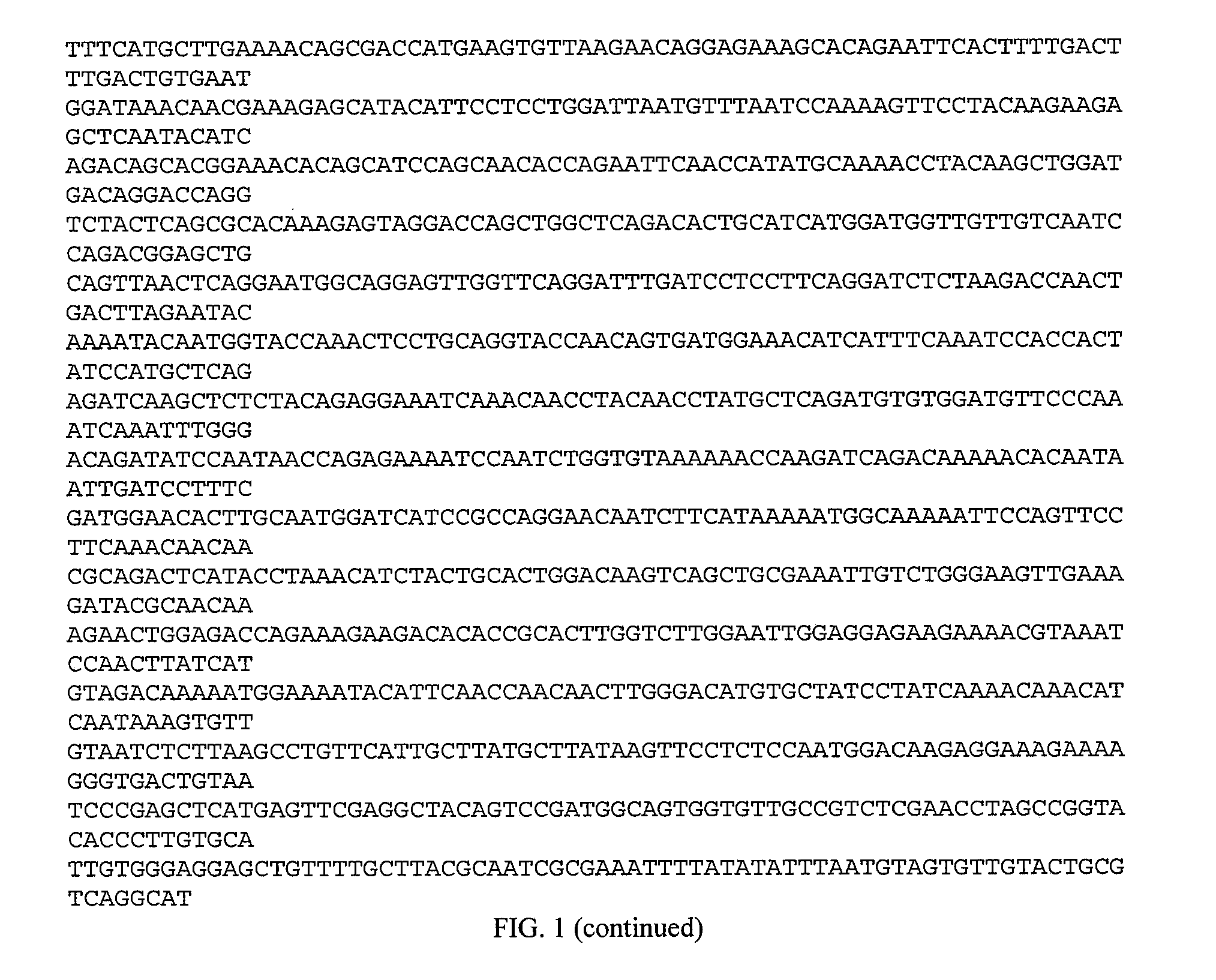Human parvovirus: bocavirus
a human parvovirus and bocavirus technology, applied in the field of discovery of a new human parvovirus, can solve the problems of high morbidity in affected populations, high contagious b19, and other divergent human parvoviruses that have not yet been identified, and achieve the effect of promoting amplification of nucleic acids
- Summary
- Abstract
- Description
- Claims
- Application Information
AI Technical Summary
Benefits of technology
Problems solved by technology
Method used
Image
Examples
example
[0211]Using viral metagenomics a novel parvovirus species (termed HBoV2) and variants thereof were identified in human stool, whose closest phylogenetic relative is the human bocavirus (HBoV). HBoV2 has an identical genomic organization to HBoV but shares only 78%, 67%, and 80% identity to its NS1, NP1 and VP1 / VP2 proteins. Using PCR HBoV2 sequences were detected in 5 / 98 Pakistani children stool samples and 3 / 699 stool samples from the UK. Near full genome sequencing showed the presence of three divergent genotypes and evidence of recombination.
[0212]Patients, materials, and methods. Stool samples from 57 children with non-polio AFP (mean age 54.6 months) and 41 from healthy Pakistani children (mean age 39.8 months) were analyzed. Samples were collected as part of the WHO poliovirus eradication program. 699 stool samples from a mixed age population submitted for enteric bacteriology screening in Edinburgh were also analyzed.
[0213]Stool supernatants were processed for viral metagenom...
PUM
| Property | Measurement | Unit |
|---|---|---|
| Temperature | aaaaa | aaaaa |
| Temperature | aaaaa | aaaaa |
| Fraction | aaaaa | aaaaa |
Abstract
Description
Claims
Application Information
 Login to View More
Login to View More - R&D Engineer
- R&D Manager
- IP Professional
- Industry Leading Data Capabilities
- Powerful AI technology
- Patent DNA Extraction
Browse by: Latest US Patents, China's latest patents, Technical Efficacy Thesaurus, Application Domain, Technology Topic, Popular Technical Reports.
© 2024 PatSnap. All rights reserved.Legal|Privacy policy|Modern Slavery Act Transparency Statement|Sitemap|About US| Contact US: help@patsnap.com










